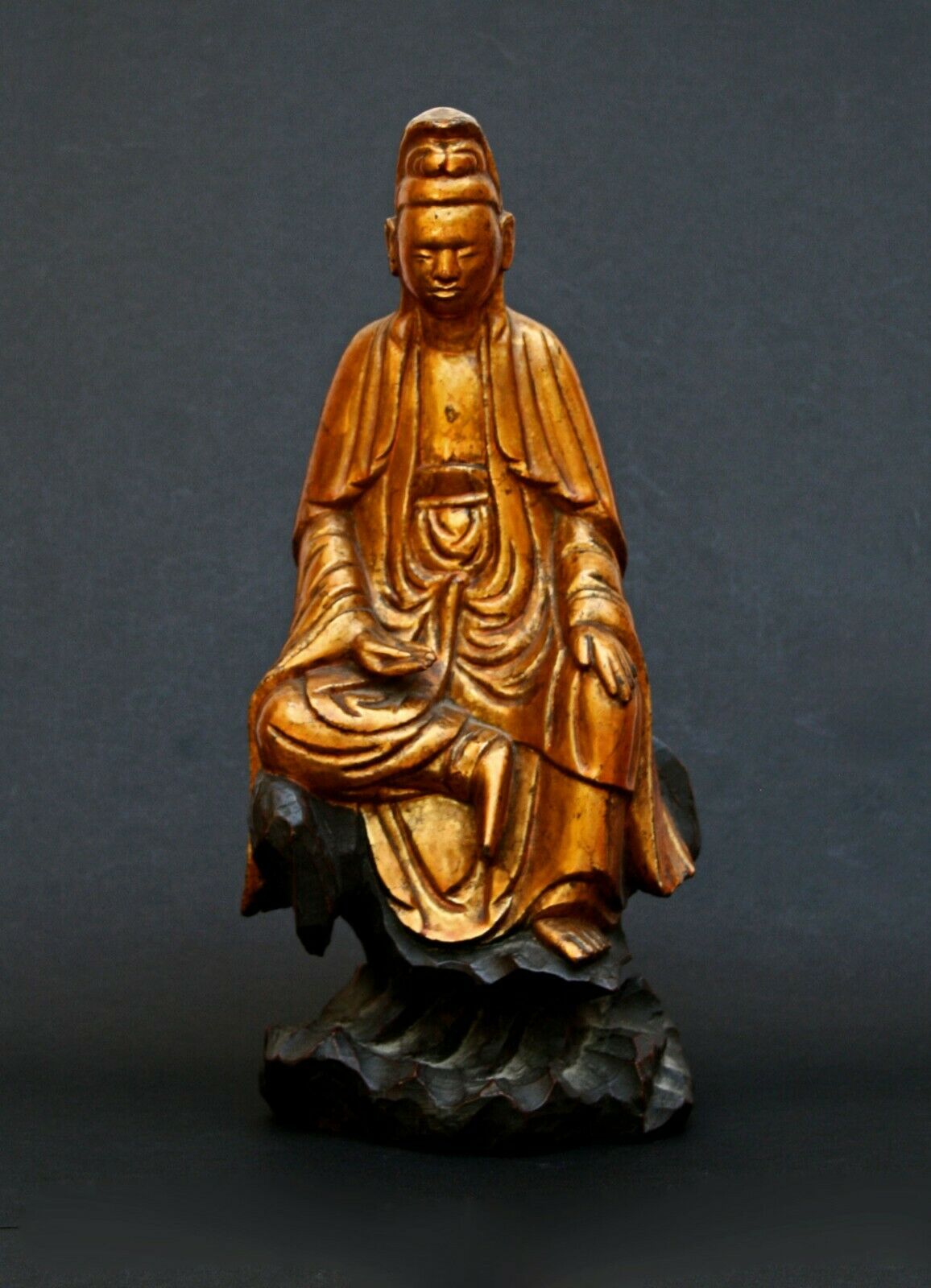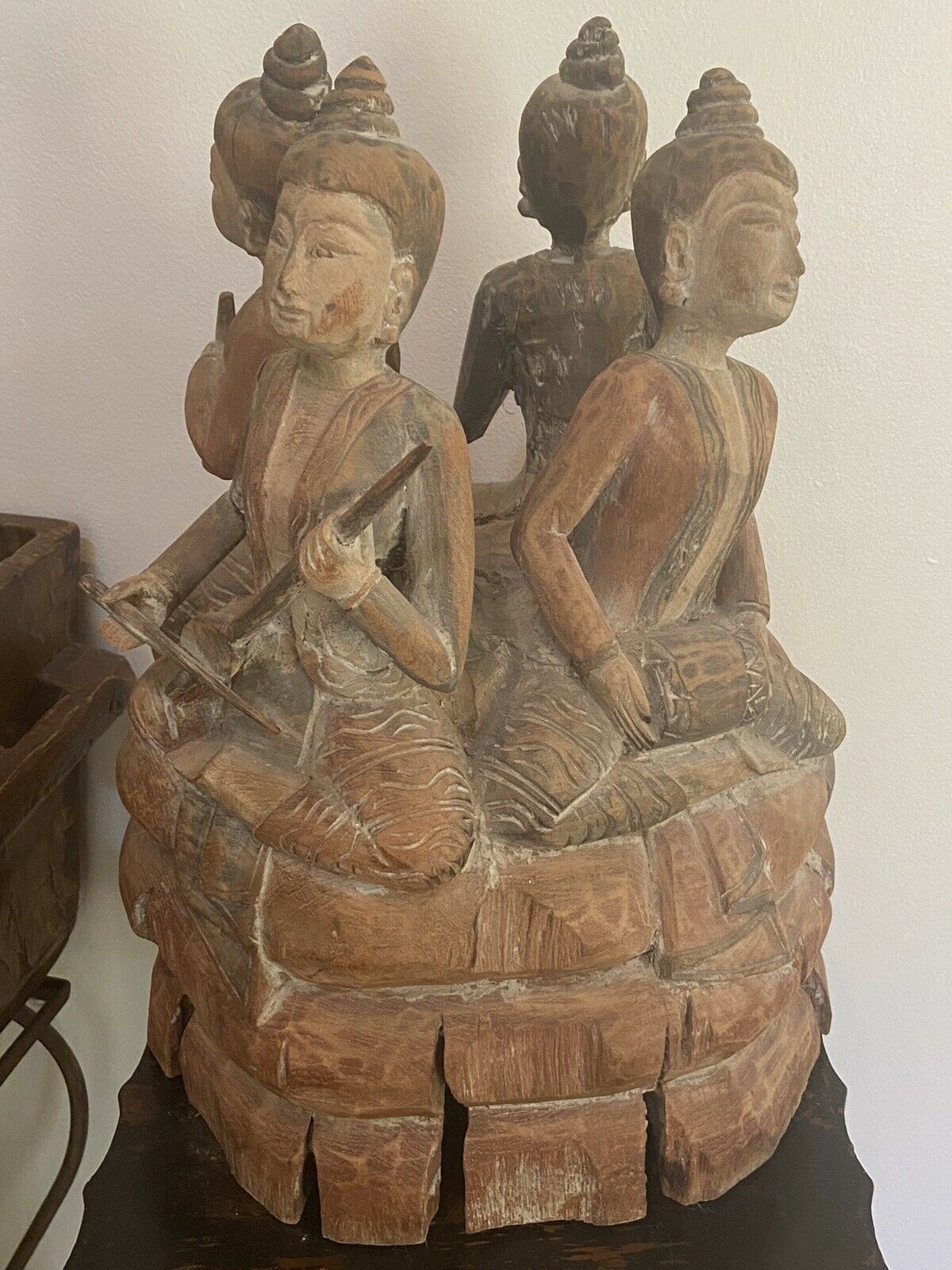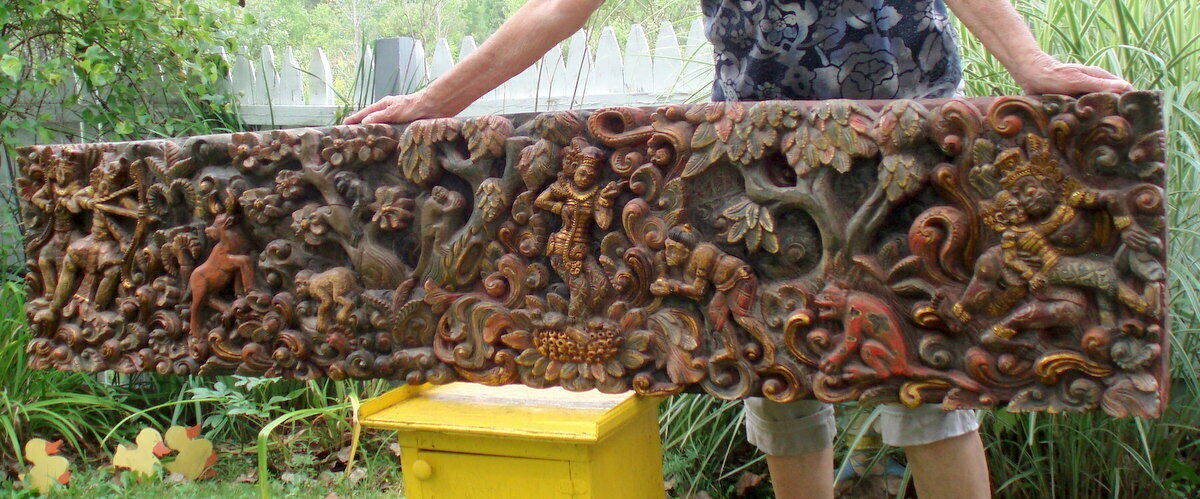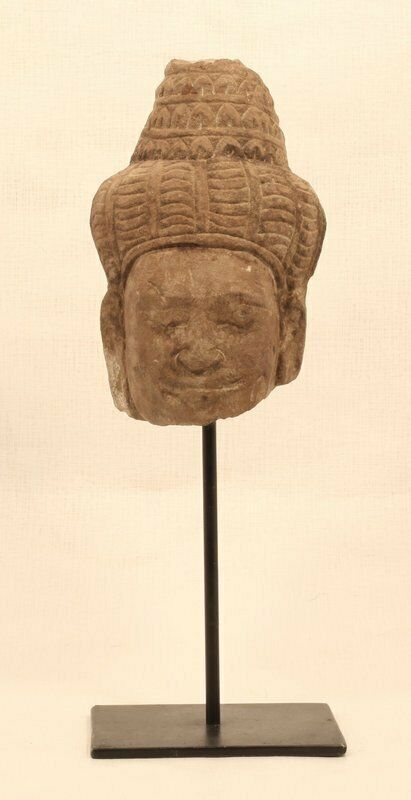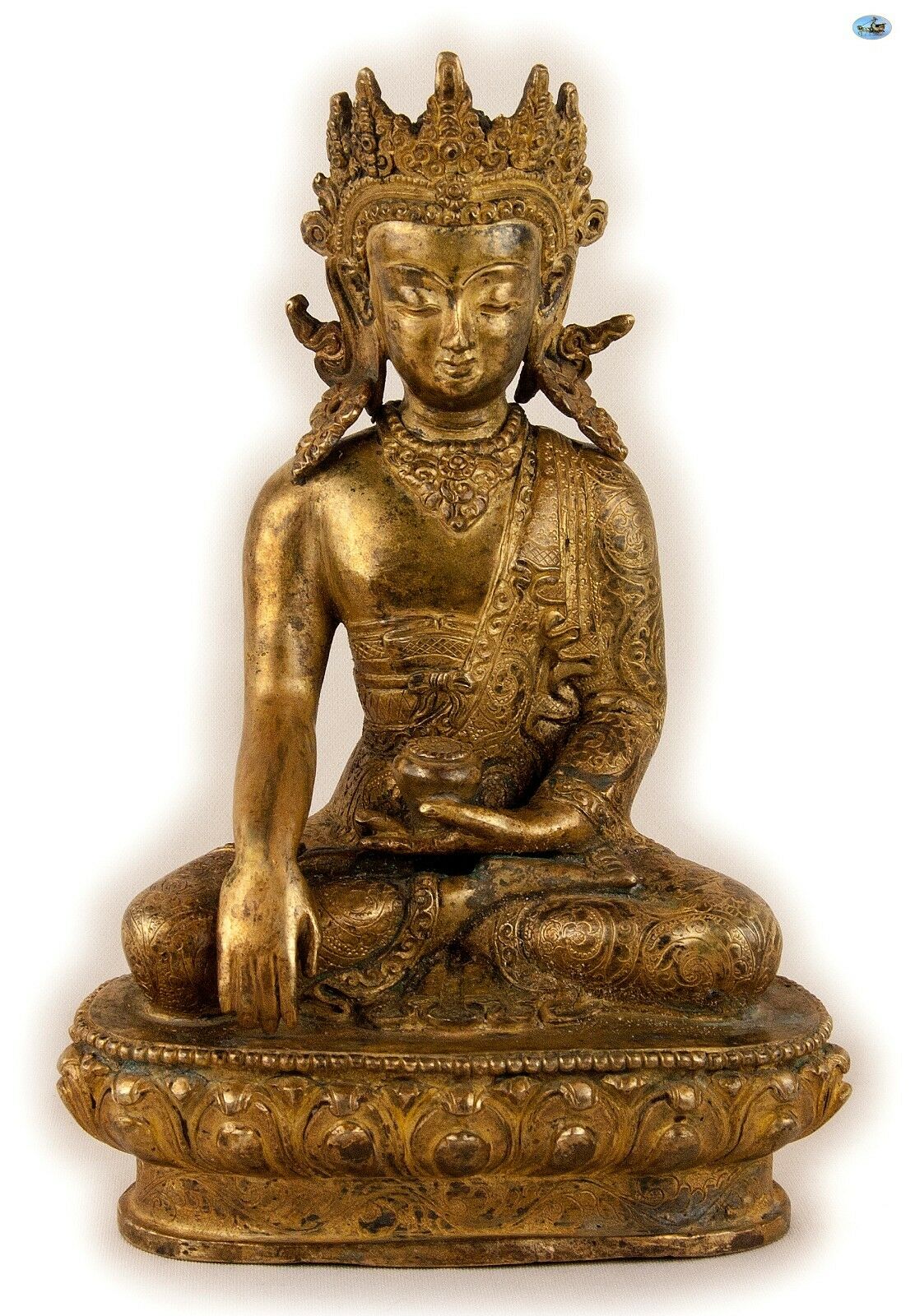-40%
Antique Phra Chai Ngang King Emperor Thai Gilt Gold Bronze Buddha Figure Statue
$ 237.6
- Description
- Size Guide
Description
Phra Buddha Statue BuchaThis style amulet is extremely rare and very difficult to come by.
** Worthy Spiritual **
Product Description
Phra Chai Ngang statue 223ew
Phra Chai Bucha Ngang King Emperor gorgeous Buddha statue Ayutthaya Style
Very RARE
Antique Phra Chai Bucha Ngang Shakyamuni Ayutthaya Thai Gilt Bronze Buddha Buddhism Figure Statue .
Ancient Buddhist Ornament Figurine Sculpture .
Antique Gilt Ancient Ayutthaya King Emperor gorgeous SEAT Buddha Statue
*** Phra Buddha Figure The Most beautiful Asia Statue sculptures ****
The sculpture provides the perfect Buddha to bring serenity and timeless style to your home, office or sacred space.
Functions:
protection, avoiding of danger, loving kindness, improve luck, enhance wealth, wish granting, attraction, charisma, improving sales, ensuring a smooth sailing life and career
** ***
Antique Phra Meditation Ayutthaya Gilt Bronze Thai Buddha Staue .
Height : 11.5 inches
Width : 6 inches
Deepth : 2.7 inches
Origin : Thailand
Weight:
1773 grams
Great Wealth Saney Windfall Luck (Casino,4D,Toto) Business Luck Opportunit
Details:This is believed to be good for:
这尊牌相信能帮助:
招财开运 :Brings you great luck
提升赌运/横财运:Gambling luck (4D,TOTO,Casino)
让善信生意兴隆 / 提升销售额 / 招来商机 :Improve your business/Attracts Opportunities/More Sales
添福聚财/累计财富:Increase Prosperity/Accumulate Great Fortune/Wealth
保佑善信在投资方面得到成功获利(股票,期货,等):Success In Investments (Shares,Forex,Etc)
保佑善信减轻所负债务: Reduce Debt Owed
多进少出累积财运聚财:Accumulate Fortune
事业蒸蒸日上升职加薪:Climb Up The Corporate ladder
让人见你有好感好的印象:Give Good Impression To Others
提升自信:Boost Self Confidence/Self Esteem
保佑你找到适合的好工作: Help Find A Suitable Job
事业使用顺顺利利:Smooth Sailing In Career / Business
提升人缘:Improve Metta(Interpersonal Relationship)
提升异性缘/吸引力/魅力:Attract opposite Gender/Attractiveness
得到众人尊重有威严:Gain Respect and Authority
让人容易信任你相信你: Gain Trust From Others
让下属服从: Let Subordinates Listen To You
提升第六感应:Improve Six sense
让伴侣比较顺从:Spouse Listen to you more
解决生活中难题:Solve Problems
远离困境:Avoid Hardship
保护远离危险灾难/Protects Against Dangers & Harm
成愿:Wish Granting
Phra Chai Bucha
High Spiritual power Phra Chai Bucha Phra Chai means Buddha image of Victory and to defeat an enemy
Thai beleived Phra Chai a buddha amulet of victory and to Conquering and to defeat all enemy remove your obstacles to ensure your success in everything you do ,as long as you always do good deeds horoscope improvement change bad luck to good luck, and recived helpful treatment from others punisher of evil and protection the whorshipper from harm , dark magic , danger,and bad influence inside of staue bucha contains many powerful sacred ingredients , will increase powers of Phra Chai especially about wealth successful in business deals, ,superb for good luck and wealth fetching , more charm attraction sex appeal and success in love
Intended for the protection of everyone in this place. Success and prosperity.
Home Decor , This is a beautiful and This will ward off evil and bring you all good luck
From Antique collectors in Thailand
******
The Ayutthaya period began after the establishment of Ayutthaya as the capital city by King Ramathibodi I (King U Thong) in the 10th century A.D. The city survived until its second defeat in the 18th century at the hands of the Burmese troops.
The Buddha statues from this period are usually characterized by the distinctive hair frame and two small lines carved above the upper lip and the eyes, a feature that has survived into the current Rattanakosin period . Buddha statues from the Ayutthaya era fall into three distinct categories.
Early Ayutthaya Period : Art during the early Ayutthaya period was influenced by Lopburi art . Buddha images carved out of stone were highly prized.
Middle Ayutthaya Period : By this time Sukhothai characteristics had largely been adopted. The construction of large Buddha images became very popular and materials varied from gilded bronze to bronze plated and even brick and stucco. Postures included, seated reclining and standing.
Late Ayutthaya Period : In the later period the creation of bronze Buddha images in royal attire became very popular. Two distinct styles gradually evolved; a Buddha in profusely adorned Emperor's attire and a more moderate (though still regal) version that featured a crown or diadem with flanges covering both ears. The bases also became more decorative for the seated Buddha statues .
****
Ayutthaya Buddha Images
The city of Ayutthaya was founded in 1350 by King U Thong . It prospered, conquered its neighbors and drove back the last Khmer influence across the Mekong River. It replaced Sukothai as the dominant power in the area in the 15th century and prospered until its destruction by the Burmese in 1767.
The early Ayutthaya Buddha images have developed from Khmer and Lopburi style, with an interesting transition period in the late 13th and early 14th century. Influences from Sukothai follow in the 14th and 15th century. The biggest achievement of the Ayutthaya artists is to bring more variety to Buddha images with respect to materials, poses and pedestals, largely in the second half of the Ayutthaya period. In the first half, sitting images in the ?Calling the Earth to Witness? pose clearly dominate. The few standing and even more so the very few walking Buddha images (following the popular Sukothai position, but quickly abandoning the walking style completely) are the rarest early Ayutthaya Buddha images. In the middle of the Ayutthaya period, a crowned Buddha image appeared, contrary to Buddhist belief that all worldly materialism should be relinquished. This may serve as a reminder of the Buddha?s noble birth, or refer to a part of the Buddhist mythology where Buddha dressed like a prince to impress others just to teach them, that outer appearance doesn?t matter, or it may be the Thai ideal of beauty that a revered image should look as precious as possible. Whatever it was, the crown decoration evolved and towards the end of the Ayutthaya period there was hardly an inch on the body and pedestal of the Buddha images that was not richly decorated with the most ornate decorations and precious stones. The plain, undecorated style continued to exist, often in wooden Buddha images and not as common as the adorned images during the late Ayuthaya period.
Ayutthaya Buddha images don?t know different regional schools, like their Lanna and Sukothai neighbors, rather the style changes over time; an evolution of the Ayutthaya style.
The different periods of Ayutthaya are:
Early Ayutthaya:
U Thong 1 (1350 - 1448) the most desirable images, strong and awe-inspiring faces. Well defined bodies but not as muscular looking as Sukothai style. Mostly sitting and almost exclusively in ?Calling the Earth for Witness? pose. Occasional standing and extremely rare walking images.
U thong 2 (1449- 1529) noble appearance, more elegant than U Thong 1 and softer face. Regarding poses refer to U Thong 1.
Middle of Ayutthaya
Ayutthaya-Suphannapoom (1530 - 1569) more standing images, sitting images come in ?Meditation? and ?Western style? pose, but ?Calling the Earth to Witness? clearly dominates. Crowned images appear, decoration still limited to crown and sometimes one necklace and/or bracelet. Still beautiful faces, but lack a little bit the serenity and elegance of U thong.
Ayutthaya-Sukothai (1569 - 1629), more variety, beginning of decoration of pedestals, ensembles become popular (Buddha with adoring disciples, Mara?s army). Crowned images largely like Suphannapoom
Late Ayutthaya
Ayutthaya Prassattong (1630 - 1688), heavily decorated pedestals, robes and bodies. Mostly crowned Buddha images, the crown having evolved from preceding styles, now being much higher and more elaborate. Crowned images that resemble preceding periods still exist. Sometimes plain Buddha images sit on overly decorated pedestals. It seems the more attention artists give to the decoration, the less attention is given to the faces, unfortunately also for the few remaining plain images. Beautiful faces become rare.
Ayutthaya Banpuluang (1688 - 1767), heavy decoration of Buddha images gets even more opulent, sometimes so overloaded that the Buddha is hart to make out under all the decoration. Otherwise like Prassattong. Simple images, even on relatively plain pedestals still exist.
Ayutthaya Buddha images vary greatly in their prices. U-thong Buddha images are expensive. Outstanding pieces in good condition can even come close to Sukothai prices. In the middle and late Ayutthaya period everything depends on quality of craftsmanship, not so much on the age.
Refer to the Buddha Gallery for pictures of all the Ayutthaya periods
**
AYUTTHAYA KINGDOM
Ayutthaya
, a former capital of Thailand from 1350 to 1767, is and interesting historic spot visited by large numbers of tourists on a one-day trip from Bangkok. Unlike other tourist centres, Ayutthaya's main attraction is not its beautiful scenery, but its calm atmosphere with the remains resulting from the destruction by the invading Burmese army in 1767. The ruins offer the visitors a glimpse of old Ayutthaya, with once was a prosperous and majestic capital with over 400 magnificent Buddhist monasteries.
The Kingdom of Ayutthaya (1350-1767)
For 417 years the kingdom of Ayutthaya was the dominant power in the fertile Menam or Chao Phraya Basin. Its capital was Ayutthaya, an island-city situated at the confluence of three rivers, the Chao Phraya, the Pasak, and the Lopburi, which grew into one of Asia's most reknowned metropolises, inviting comparison with great European cities such as Paris. The city must indeed have looked majestic, filled as it was with hundreds of monasteries and criss-crossed with several canals and waterways which served as roads.
An ancient community had existed in the Ayutthaya area well before 1350, the year of its official "founding" by King Ramathibodi I (Uthong). The huge Buddha image at Wat Phananchoeng, just outside the island-city, was cast over twenty years before King Ramathibodi I moved his residence to the city area in 1350. It is easy to see why the Ayutthaya area was settled prior to this date since the site offered a variety of geographical and economic advantages. Not only is Ayutthaya at the confluence of three rivers, plus some canals, but its proximity to the sea also gave its inhabitants an irresistible stimulus to engage in maritime trade. The rice fields in the immediate environs flooded each year during the rainy season, rendering the city virtually impregnable for several months annually. These fields, of course, had an even more vital function, that of feeding a relatively large popula tion in the Ayutthaya region. Rice grown in these plants yielded a surplus large enough to be exported regularly to various countries in Asia.
Ayutthaya's first king, Ramathibodi I, was both a warrior and a lawmaker. Some old laws codified in 1805 by the first Bangkok king date from this much earlier reign. King Ramathibodi I and his immediate successors expanded Ayutthaya's territory, e specially northward towards Sukhothai and eastward towards the Khmer capital of Angkor. By the 15th century, Ayutthaya had established a firm hegemony over most of the northern and central Thai states, though attempts to conquer Lanna failed. Ayutthaya also captured Angkor on at least one occasion but was unable to hold on to it for long. The Ayutthaya kingdom thus changed, during the 15th century, from being a small state
primus inter pares
among similar states in central Thailand into an increasingly centralized kingdom wielding tight control over a core area of territory, as well as having looser authority over a string of tributary states.
The greater size of Ayutthaya's territory, as compared with that of Sukhothai, meant that the method of government could not remain the same as during the days of King Ramkhamhaeng. The paternalistic and benevolent Buddhist kingship of Sukhothai would not have worked in Ayutthaya. The king of the latter therefore created a complex administrative system allied to a hierarchical social system. This administ rative system dating from the reign of King Trailok, or Borommatrailokanat(1448-1488), was to evolve into the modern Thai bureaucracy. The Ayutthaya bureaucracy contained a hierarchy of ranked and titled officials, all of whom had varying amounts of "honor marks"
(sakdina)
.
Thai society during the Ayutthaya period also became strictly hierarchical. There were, roughly, three classes of people, with the king at the very apex of the structure. At the bottom of the social scale, and the most numerous, were the commoners (freemen or phrai) and the slaves. Above the commoners were the officials or "nobles"
(khunnang)
, while at the top of the scale were the princes
(chao)
. The one classless sector of Thai society was the Buddhist monkhood, or
sangha
, into which all classes of Thai men could be ordained. The monkhood was the institution which could weld together all the different social classes, the Buddhist monasteries being the center of all Thai communities both urban and a gricultural.
The Ayutthaya kings were not only Buddhist kings who ruled according to the dhamma (dharma), but they were also
devaraja
, god-kings whose sacred power was associated with the Hindu, gods Indra and Vishnu. To many Western observers, the kings of Ayutthaya were treated as if they were gods. The French Abbe de Choisy, who came to Ayutthaya in 1685, wrote that, "the king has absolute power. He is truly the god of the Siamese: no-one dares to utter his name." Another 17th century writer, the Dutchman Van Vliet, remarked that the king of Siam was "honoured and worshipped by his subjects more than a god. The Ayutthaya period was early Thai history's great era of international trade. Ayutthaya's role as a port made it one of Southeast Asia's richest emporia. The port of Ayutthaya was an entrepot, an international market place where goods from the Far East could be bought or bartered in exchange for merchandise from the Malay/Indonesian Archipelago, India, or Persia, not to mention local wares or produce from Ayutthaya's vast hinterland. The trading world of the Indian Ocean was accessible to Ayutthaya through its possession, for much of its 417-year history, of the seaport of Mergui on the Bay of Bengal. This port in Tenasserim province was linked to the capital by a wild but ancient and frequently used overland trade route.
Throughout its long history, Ayutthaya had a thriving commerce in "forest produce", principally sapanwood (a wood which produces reddish dye), eaglewood (an aromatic wood), benzoin (a type of incense), gumlac (used as wax), and deerhides (much in d emand in Japan). Elephant teeth and rhinoceros horns were also highly valued exports, but the former was a strict royal monopoly and the latter relatively rare, especially compared with deerhides. Ayutthaya also sold provisions such as rice and dried fish to other Southeast Asian states. The range of minerals found in the kingdom was limit ed, but tin from Phuket ("Junkceylon") and Nakhon Si Thammarat ("Ligor") was much sought after by both Asian and European traders.
The Chinese, with their large and versatile junks, were the traders who had the most regular and sustained contact with Ayutthaya. The Ayutthaya kings, in order to conduct a steady and profitable trade with Ming and Manchu China, from the 14th to t he 18th centuries, entered willingly into a tributary relationship with the Chinese emperors. The Thais recognized Chinese suzerainty and China's preeminent position in Asia in return for Chinese political sanction and, even more desirable, Chinese luxury goods. Muslim merchants came from India and further West to sell their highly-prized clothes both to Thais and to other foreign traders. So dominant were Chinese and Muslim merchants in Ayutthaya that an old Thai law dating back to the 15th century divides the Thai king's foreign trade department into two: a Chinese section and a Muslim section. Chinese, Indians, and later on Japanese and Persians all settled in Ayutthaya, the Thai kings welcoming their presence and granting them complete freedom of worship. Several of these foreigners became important court officials.
Containing merchandise from all corners of Asia, the thriving markets of Ayutthaya attracted traders from Europe. The Portuguese were the first to arrive, in 1511, at the time when Albuquerque was attempting to conquer Melaka (Malacca). They conclu ded their first treaty with Ayutthaya in 1516, receiving permission to settle in Ayutthaya and other Thai ports in return for supplying guns and ammunition to the Thai king. Portugal's powerful neighbor Spain was the next European nation to arrive in Ayutthaya, towards the end of the 16th century. The early 17th century saw the arrival of two northern European East India Companies: The Du tch (V.O.C) and the British. The Dutch East India Company played a vital role in Ayutthaya's foreign trade from 1605 until 1765, succeeding in obtaining from the Thai kings a deerhide export monopoly as well as one of all the tin sold at Nakhon Si Thammarat. The Dutch sold Thai sapanwood and deerhides for good profits in Japan during Japan's exclusion period, after 1635.
The French first arrived in 1662, during the reign of Ayutthaya's most outward-looking and cosmopolitan ruler, King Narai (1656-1688). French missionaries and merchants came to the capital, and during the 1680's splendid embassies were exchanged between King Narai and King Louis XIV. The French tried to convert King Narai to Christianity and also attempted to gain a foothold in the Thai kingdom when, in 1687, they sent troops to garrison Bangkok and Mergui. When a succession conflict broke out in 1688 an anti-French official seized power, drove out the French garrisons, and executed King Narai's Greek favorite Constantine Phaulkon, who had bee championing the French cause. After 1688, Ayutthaya had less cont act with Western nations, but there was no policy of national exclusion. Indeed, there was increased trading contact with China after 1683,and there was continued trade with the Dutch, the Indians, and various neighbouring countries.
Ayutthaya's relations with its neighbours were not always cordial. Wars were fought against Cambodia, Lanna, Lanchang (Laos), Pattani, and above all, Burma, Ayutthaya's powerful neighbour to the west. Burmese power waxed an d waned in cycles according to their administrative efficiency in the control of manpower. Whenever Burma was in an expansionist phase, Ayutthaya suffered. In 1569, King Bayinnaung captured Ayutthaya, thus initiating over a decade's subjection to the Burmese. One of the greatest Thai military leaders, Prince (later King) Naresuan, then emerged to declare Ayutthaya's independence and to defeat the Burmese in several battles and skirmishes, culminating in the victory of Nong Sarai, when he killed the Burmese Crown Prince in combat on elephant back.
During the 18th century Burma again adopted an expansionist policy. The kings of the Alaunghphaya Dynasty were intent on subduing the Ayutthaya kingdom, then in cultural and artistic prime. During the 1760's ,the Burmese armies inflicted severe def eats on the Thais, who had been somewhat too fortunate and complacent in having enjoyed over a century of comparative peace. In April 1767, after a 15-month seige, Ayutthaya finally succumbed to the Burmese, who sacked and burnt the city, thus putting an end to one of the most politically glorious and culturally influential epochs in Thai history.
It will make a fantastic gift for someone special or for a collector of Asian antiques.Keep it with you for Peaceful & Success Power or keep it in your house .This is a fabulous collector's item indeed!
and also for your valuable collectible thing
.
We are expert collector and trader buddha amulets , antiques , Talismans items from Thailand & Southeast Asia.
We open amulet store in Thailand too.
You can trust that the items are Rare, Sacred, Genuine and beautiful Items.
*** Important notice ***
Export this antique buddha statue - Need to ask Permit from the Thailand Department of Fine Arts . That take time about 5-7 days .
when I get Export statue License , I will ship Statue via DHL EXPRESS.












